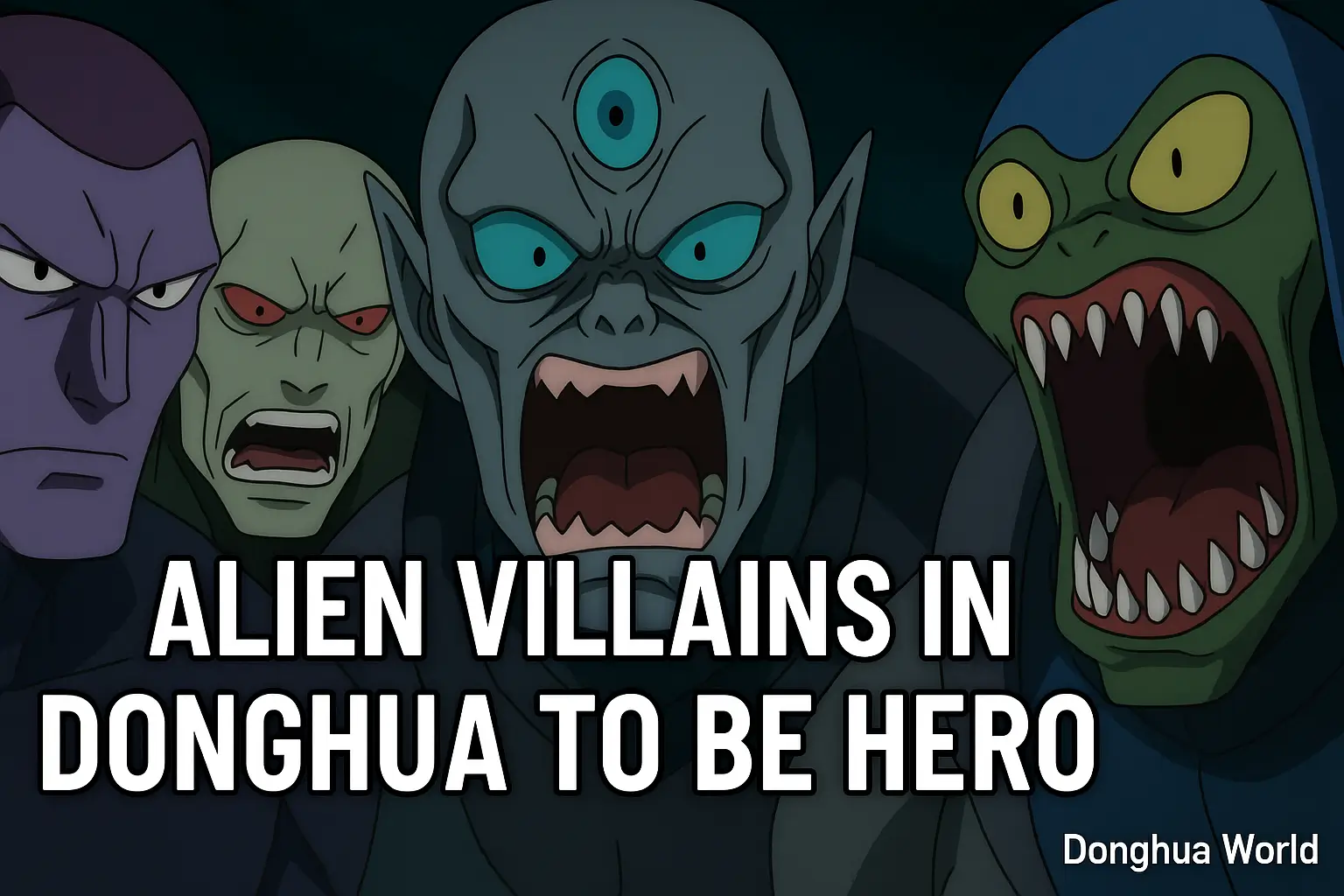Chinese animation, popularly known as Donghua, has made significant strides in storytelling, visual excellence, and character development over the past decade. One such standout production is To Be Hero, a series that cleverly blends humor, science fiction, drama, and action. Among its most intriguing elements are the alien villains — multifaceted antagonists that serve as both adversaries and narrative catalysts. This article explores the alien villains featured in To Be Hero, their contributions to the storyline, and why they represent a deeper commentary on heroism and humanity.
Understanding the World of To Be Hero
Before diving into the alien antagonists, it’s essential to understand the premise of To Be Hero. The series follows an irresponsible toilet salesman who is suddenly transformed into a fat, unattractive superhero tasked with saving the Earth from alien threats. This comedic setup hides a deeply emotional core, where themes of redemption, family, and personal sacrifice are explored.
According to Chinese animation critic Zhao Yan, “To Be Hero merges slapstick humor with emotional depth in a way that disarms the viewer, making its darker themes more impactful.” The juxtaposition of comedy and tragedy creates fertile ground for the alien villains to flourish as complex characters.
The Role of Alien Villains in Donghua
In many narratives, alien villains are mere plot devices used to showcase a hero’s strength. However, To Be Hero takes a different route. The alien villains are designed with intricate backstories, motivations, and unique powers, making them more than one-dimensional enemies. They are often representations of ideologies or emotional states that challenge the protagonist’s morality, resilience, and humanity.
Key Alien Villains in To Be Hero
1. King of the Underworld Aliens
The King of the Underworld Aliens, introduced early in the series, serves as a formidable threat. He is not just a tyrant with superior power; he embodies existential despair and nihilism. His mission to annihilate Earth stems from a belief that human emotions are a weakness.
His interactions with the protagonist offer philosophical debates about the value of emotion versus logic. His defeat is not merely physical but emotional — the protagonist proves that empathy and selflessness are not flaws but strengths.
2. Empress Vora
Empress Vora is another iconic alien villain whose design draws from traditional Chinese elements fused with futuristic aesthetics. She seeks to dominate Earth to extend her empire, believing that diversity creates chaos. Her storyline critiques authoritarianism and the suppression of individuality.
In one poignant scene, she tells the hero, “Order is beauty. Your world is chaos masquerading as freedom.” Her downfall comes not just through battle but by witnessing the collective will of Earth’s people, a metaphor for unity in diversity.
3. General Wrecktor
General Wrecktor is a militaristic alien who believes in survival of the fittest. His storyline serves as a commentary on toxic masculinity and unchecked ambition. Unlike other villains, he respects the hero’s strength but cannot understand his compassion.
His arc ends with a tragic revelation — Wrecktor was once a peacekeeper turned warlord due to a betrayal on his home planet. His character resonates with viewers as it explores how trauma can distort noble intentions.
4. Zeta and Theta Twins
These twins operate as mind-controlling parasites that feed on human fears and regrets. They symbolize internal psychological struggles rather than external threats. Episodes involving them delve into the protagonist’s past failures and unresolved guilt.
Their defeat involves introspection rather than brute force, emphasizing To Be Hero’s focus on internal growth and emotional resilience.
Alien Villains as Narrative Catalysts
Each villain in To Be Hero is more than just a hurdle — they catalyze the protagonist’s transformation. They force him to confront his past, assess his values, and evolve emotionally. Unlike traditional Western superhero stories where villains often fall into archetypes, the villains in To Be Hero reflect contemporary societal and psychological issues.
According to animation scholar Li Feng, “The alien antagonists in Chinese animation often serve as mirrors to the hero’s inner struggles. In To Be Hero, they highlight the multifaceted nature of human conflict — both external and internal.”
Cultural Significance of Alien Villains in Donghua
The alien villains in To Be Hero also represent a growing trend in Donghua — integrating Chinese philosophy with modern storytelling. Concepts such as Yin and Yang, collective harmony, and the Taoist idea of balance between order and chaos are subtly embedded in these antagonists.
For instance, Empress Vora’s obsession with order directly opposes the Taoist belief that forced control leads to imbalance. Her defeat is symbolic of the restoration of natural harmony. These nuanced portrayals elevate the narrative beyond mere entertainment.
Why They Resonate with Global Audiences
Despite being a Chinese production, To Be Hero has found international acclaim, partly due to its complex villains. Viewers across cultures relate to themes of redemption, internal conflict, and moral ambiguity. The alien villains serve as universal metaphors — war, authoritarianism, emotional suppression, and the fear of the unknown.
This relatability is key to the show’s success. According to a report by the Beijing Animation Research Center, “Characters in Donghua like To Be Hero achieve global appeal by tapping into universal human experiences, despite their culturally specific origins.”
Conclusion: More Than Just Villains
The alien villains in To Be Hero are not just obstacles; they are mirrors, teachers, and catalysts. They represent fears, ideologies, and emotional trials that test the hero in every way. Through them, the series not only delivers compelling drama but also provokes thought about the nature of good, evil, and what it means to be human.
In the ever-growing world of Donghua, To Be Hero sets a benchmark for how antagonists can enrich storytelling. These alien villains are a testament to the depth and maturity that Chinese animation can achieve — making it not just entertaining, but enlightening.
